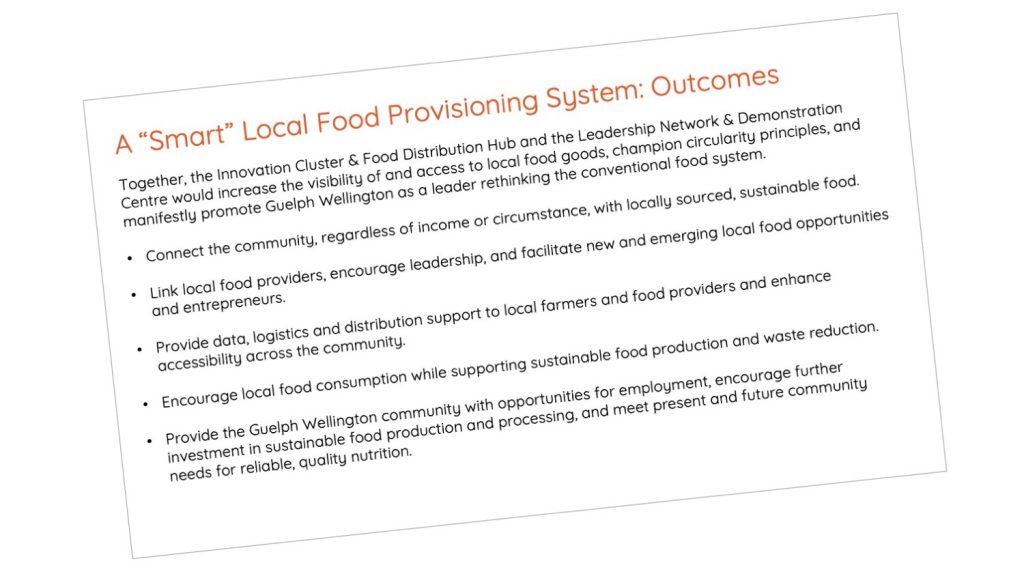The Creation of the NGEN Food Hub Feasibility and Circular Food Manufacturing Capability Model

A step by step recipe to assist other communities determine the path forward relative to building local food hubs and other food systems transformations.
START
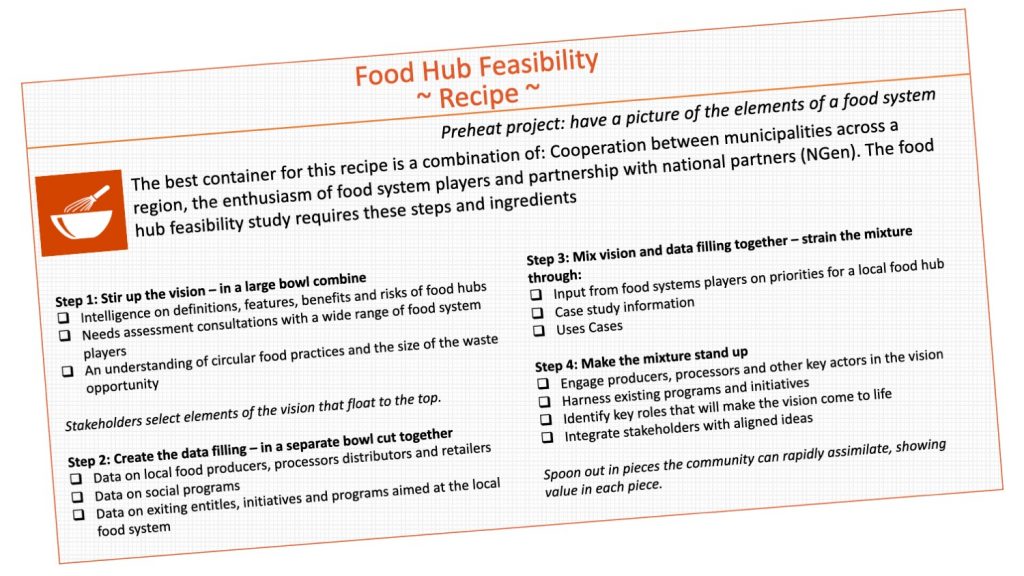

















Additional information on our processes follows…
Consider the overarching system you are trying to impact. Is there a model of it?
Why is this important? A food system exists ”de facto” whether or not people think about it as a system.
To think about impacting a food system, we need to understand enough about the parts to know how the action we take will positively or negatively impact them.

































The food system model we adopted was this one:
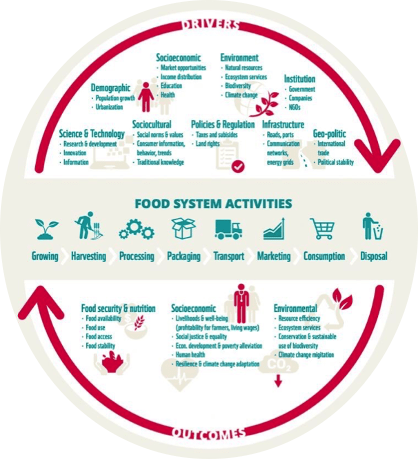

Source: Collaborative Framework for Food Systems Transformation: a multi-stakeholder pathway for sustainable food systems, United Nations Environment Programme, 2019
















Research the space. What are circular food hubs and what forms do they come in?
We created a white paper on food systems, and a summary on the research into food hubs and circular food economies.
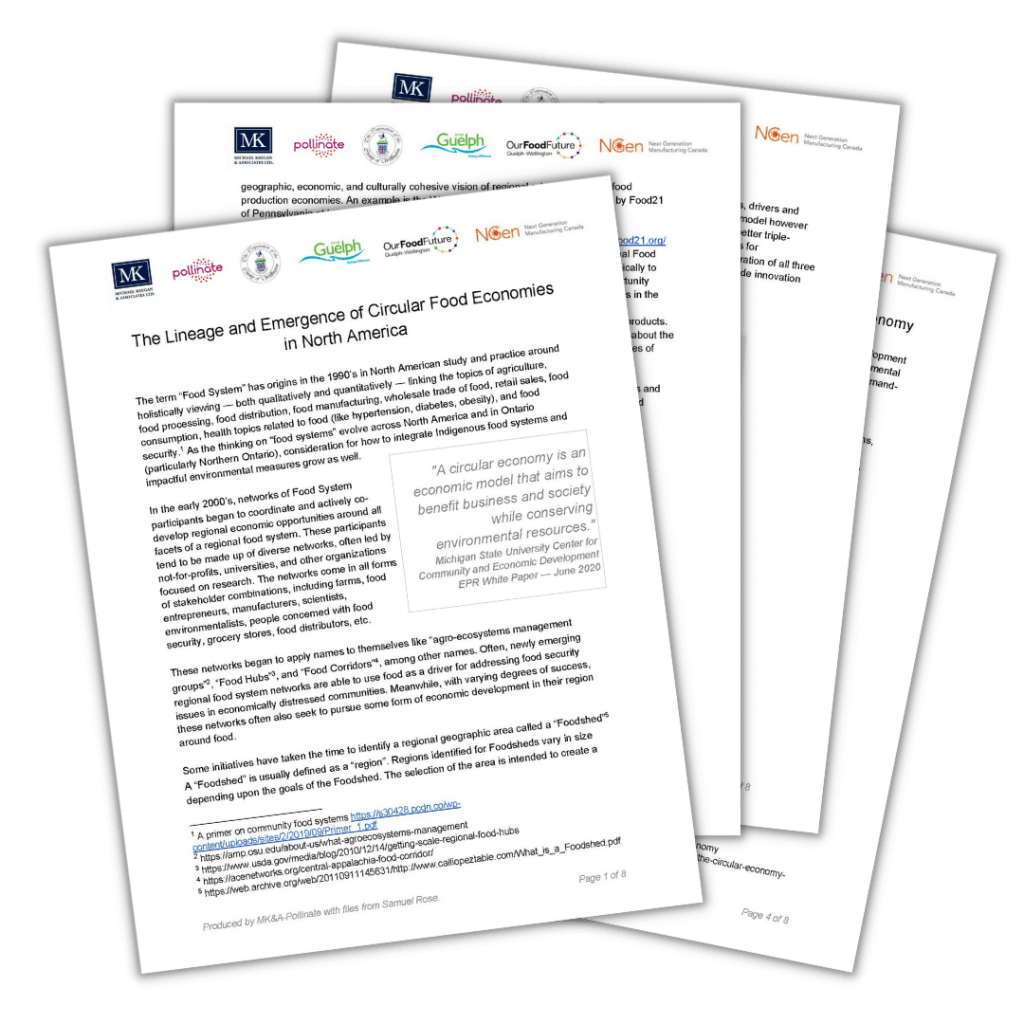

We looked at all of the dimensions a food hub might have.
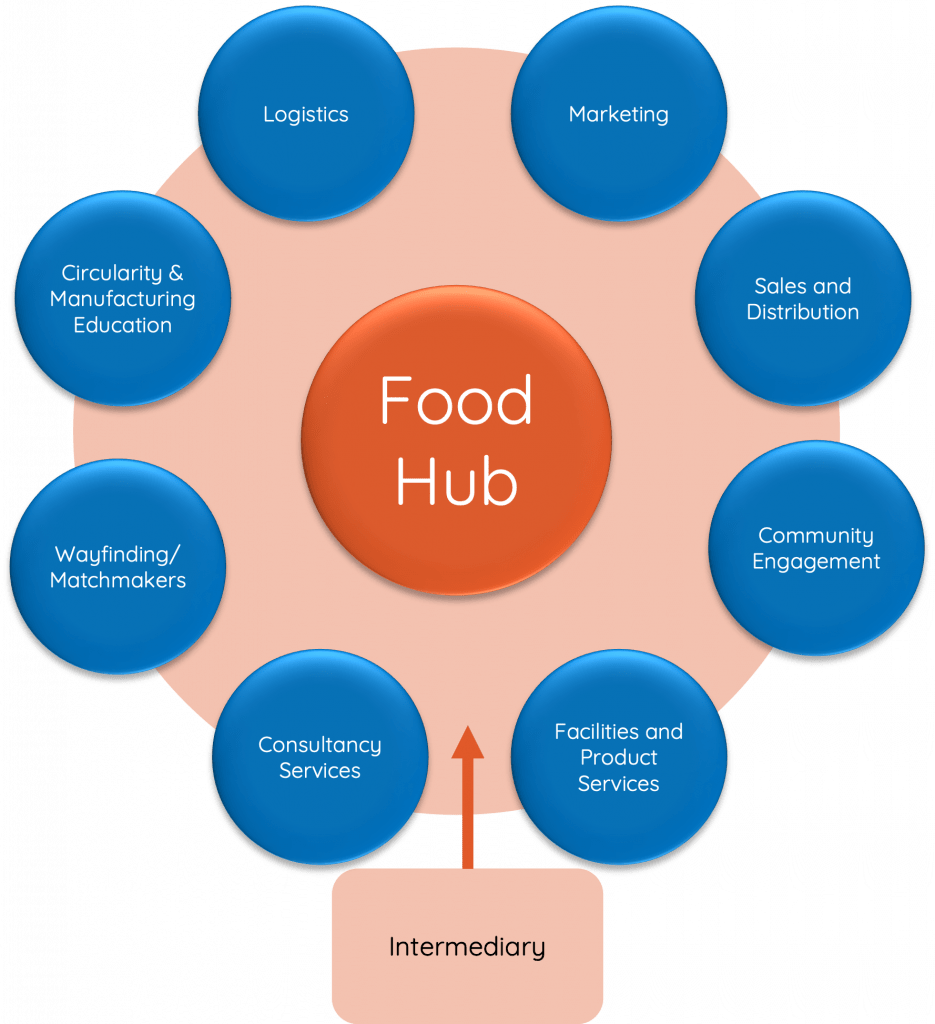

















We set up a sharing site for all collaborators so the various articles, reference sites and progress on the report was visible.
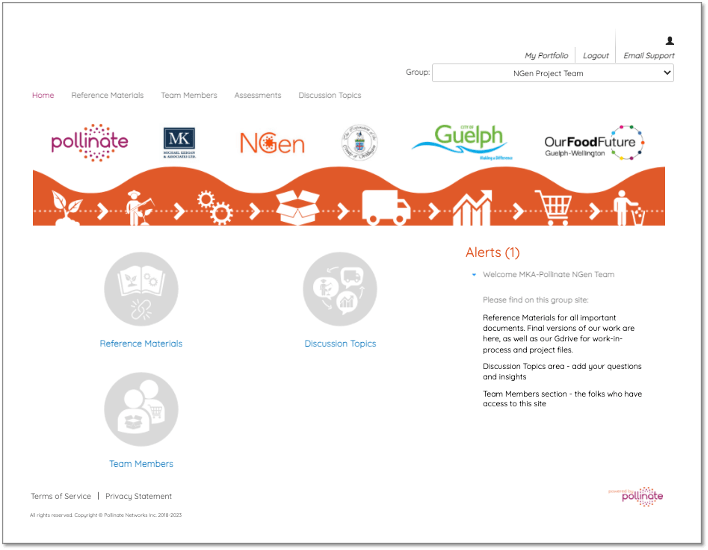

















Agree on general outcomes with originating stakeholders. Ensure the regional or group identity or brand is represented in the outcomes.
Our stakeholders wanted to understand how the social, economic and environmental aspects of the local food system in Guelph Wellington might interact with a food hub model. Through hosting several local and national initiatives, Guelph is the centre for circularity in Canada. How could we have more local food, created with increasingly circular practices? The greater Guelph area is already known for being a “green” place.
















Consult key stakeholders on the vision.
Guelph Wellington had 3 overlapping visions emerge. One for a local food hub, one for entrepreneurs pursuing circular food businesses and one for systems transformation. The local food hub, with overlaps into the other visions were selected for feasibility.
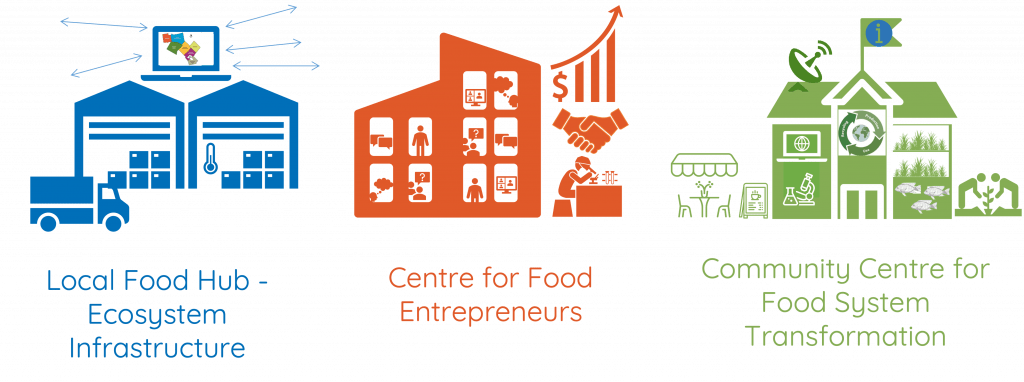

















Teasing apart the local food ecosystem takes some deliberate effort. At first it looks like this:
![]()
![]()
















To sort this out, map the ecosystem that exists around the vision. Include both those taking action in the supply chain/value exchange and those who impact the system through education, regulation, funding and programs.
For the GW local food feasibility project, we amalgamated a database of existing local food players. This included those from across the supply chain: producers (farms), processors (makers and factories), suppliers, distributors, retailers, etc. as well as those involved in the social food system and those who have responsibility for driving circular food practices.
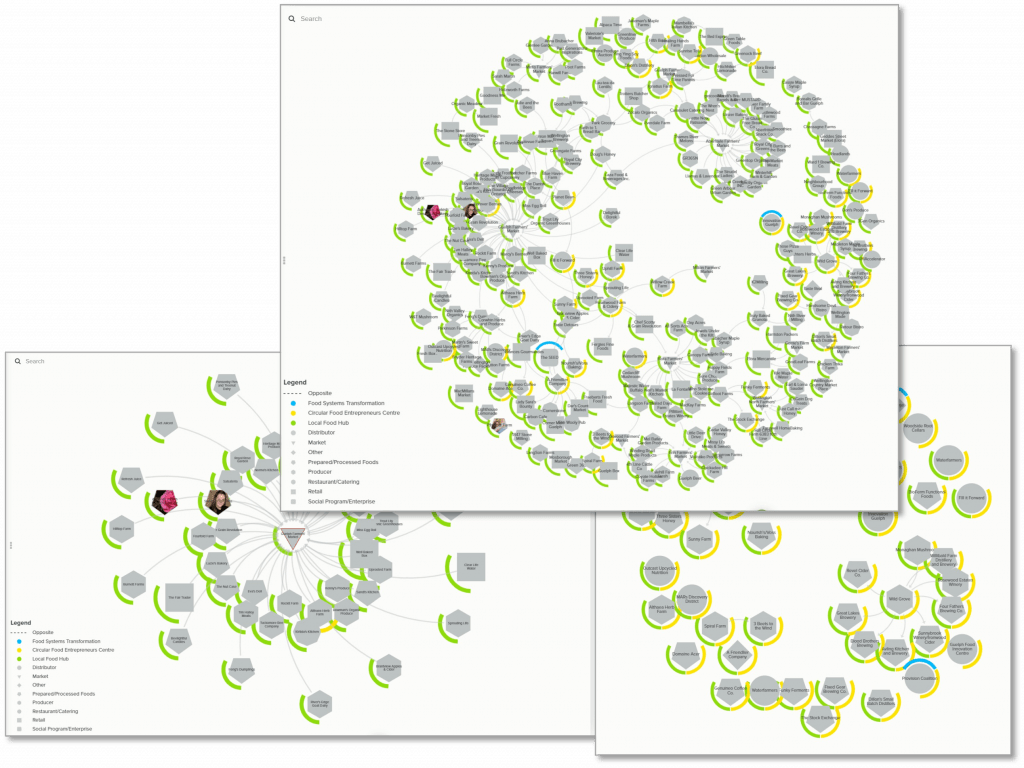

















Our method for mapping the ecosystem for the local food hub is below:
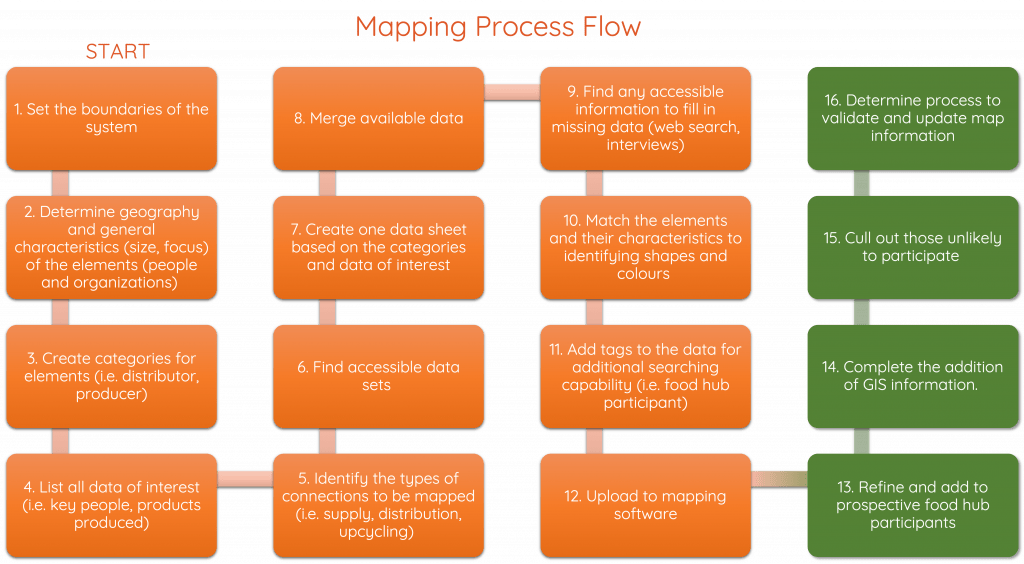

















Look closer at success (and failures) in the market and build use cases for the hub you are designing.
How will you avoid the failures and get the success? Who will the hub serve and what will they get that they want?
For the GW local food hub feasibility project we looked at several case studies of different local food hub models: How they were set up, governed, financed, who they serve and ultimately who was involved.
Case Studies:

















Cross reference the areas of interest for your stakeholders with the research on successful approaches. Look at the people and companies that you have in the ecosystem from a first pass at the stakeholders.
Find two things:
1 – The elements you want to start with for your food hub
2 – A short list of people and companies who might want to be in the community of interest to start the food hub.
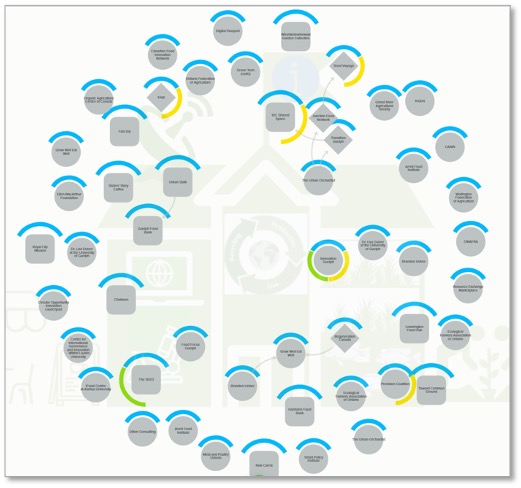

For Guelph Wellington, priorities for food hub areas included:
-
Match-making and wayfinding to existing resources in the ecosystem
-
Access to knowledge and information about the changing market and how to gain more access
-
Need for a connection between the social/emergency food system and local food producers
-
More interplay between new circular companies, and circular resources and existing businesses
The short list of people and companies who would be part of the community of interest to set up the food hub includes: food producers and processors, managers of the emergency food system, circular and local food program managers.
















Articulate an overall vision for what the food hub can become. Which elements can be built and how will they serve the community?
Our model of “all” of the food hub elements possible is here:
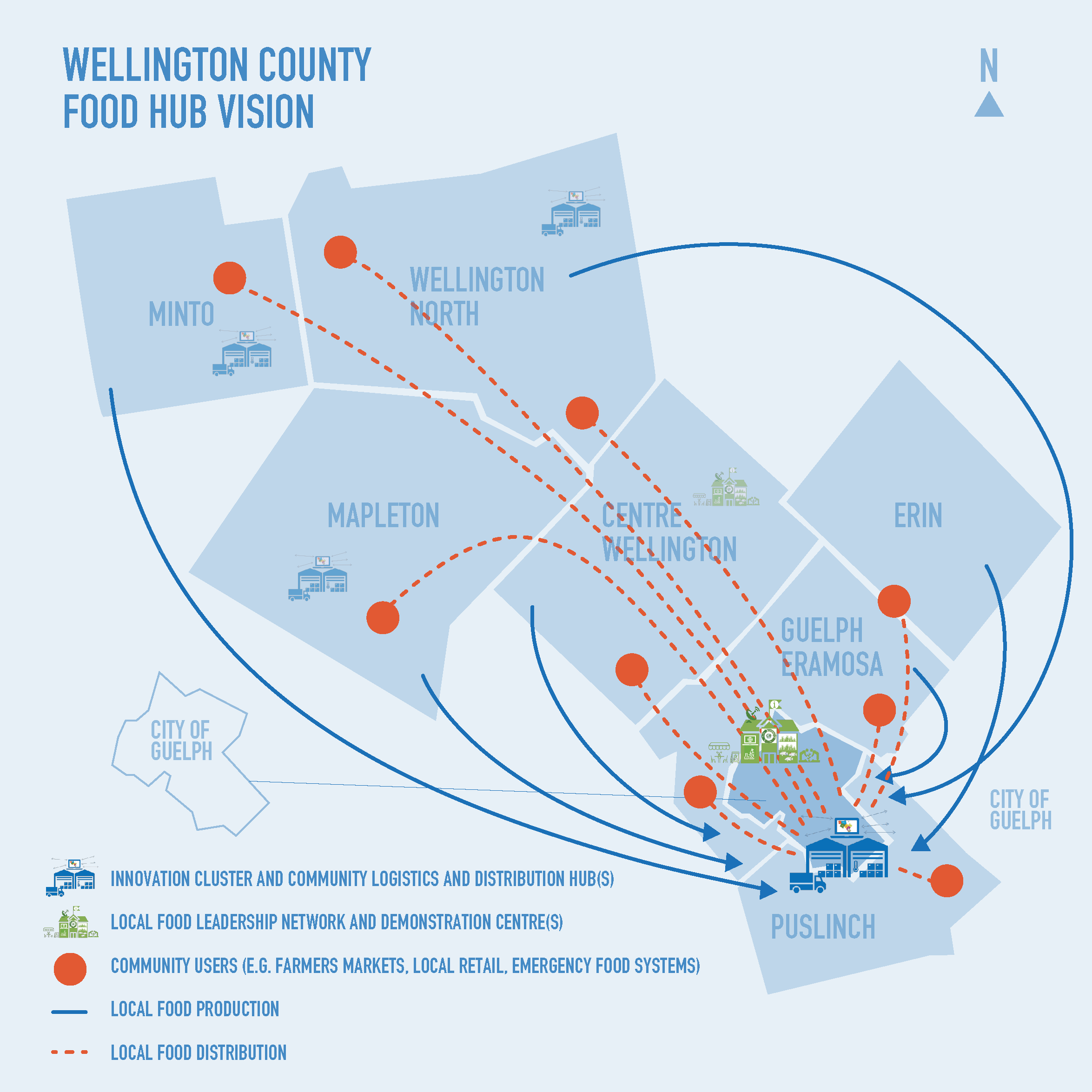

















Make the vision stand up by engaging the entities already working on local food to take on key roles.
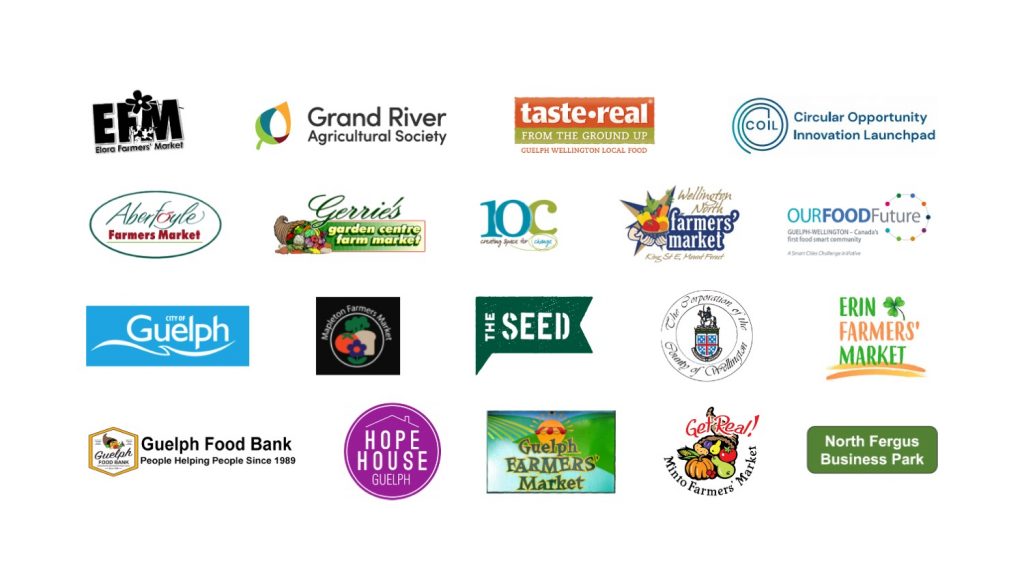

+
Producers and processors
+
Others with similar vision
















Develop outcomes:
